Public collection "Anchor Museum" in Ahtopol - immersion in the thousand-year-old maritime tradition with a great love for the sea
- Stefan Ivanov

- Aug 5
- 12 min read
Located on the picturesque coast of the Black Sea, Ahtopol is a city with a thousand-year history, whose existence is inextricably linked to the vast expanse of the sea.
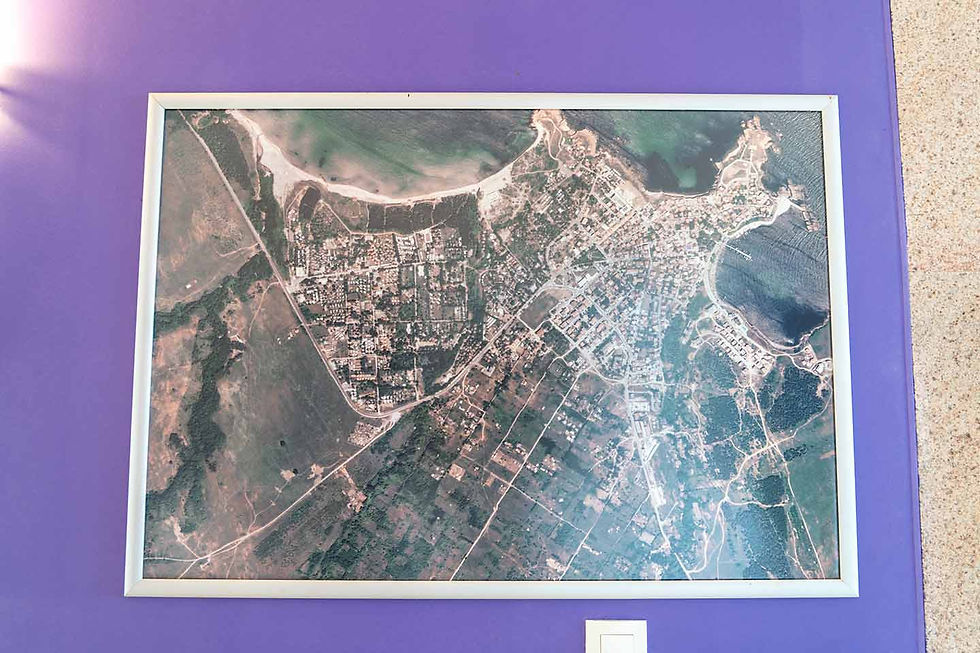
Known in ancient times as Agathopolis, the village has been home to settlers since the Neolithic Age, and during the Iron Age it was inhabited by the Thracian tribe of Tini.
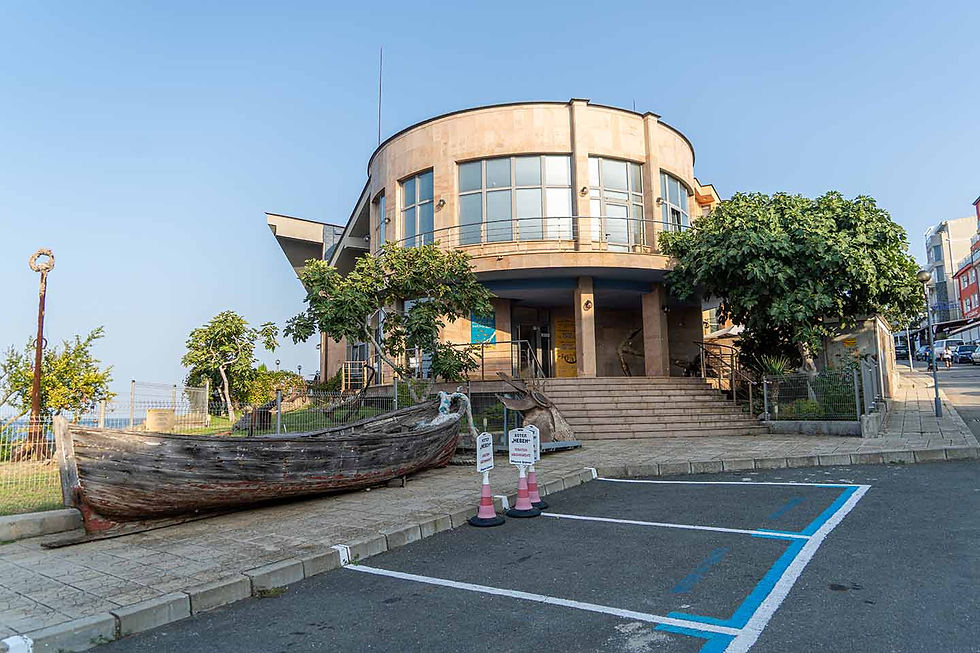
Founded as a city around 430 BC by Greek colonists from Athens, Ahtopol quickly established itself as a significant trading center, even minting its own coins.
Its strategic location made it an important port, providing trade links with major Mediterranean cities such as Miletus, Megara, Athens, Constantinople, Venice and Genoa. To protect itself from frequent pirate attacks, the city built strong fortress walls, which earned it the names Avlikon Tychos (the wall of Tychos) or palace wall (fortification).
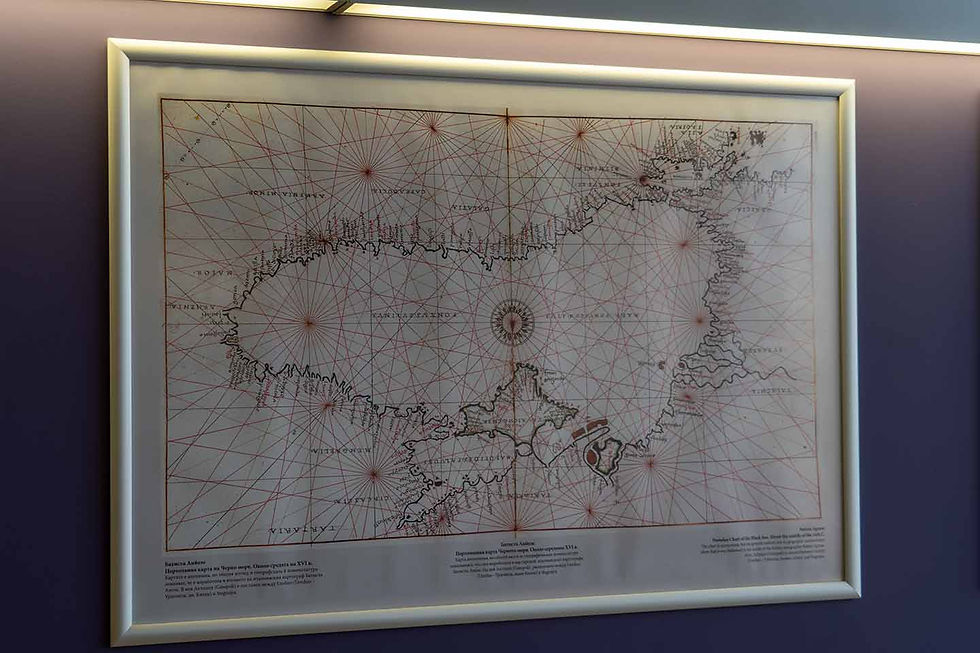
During the Middle Ages, Ahtopol often passed between Bulgarian and Byzantine rule, which further emphasized its strategic importance.

This continuous thread of maritime activity, stretching from antiquity to the present day, shows that Ahtopol's identity is inextricably linked to the sea.
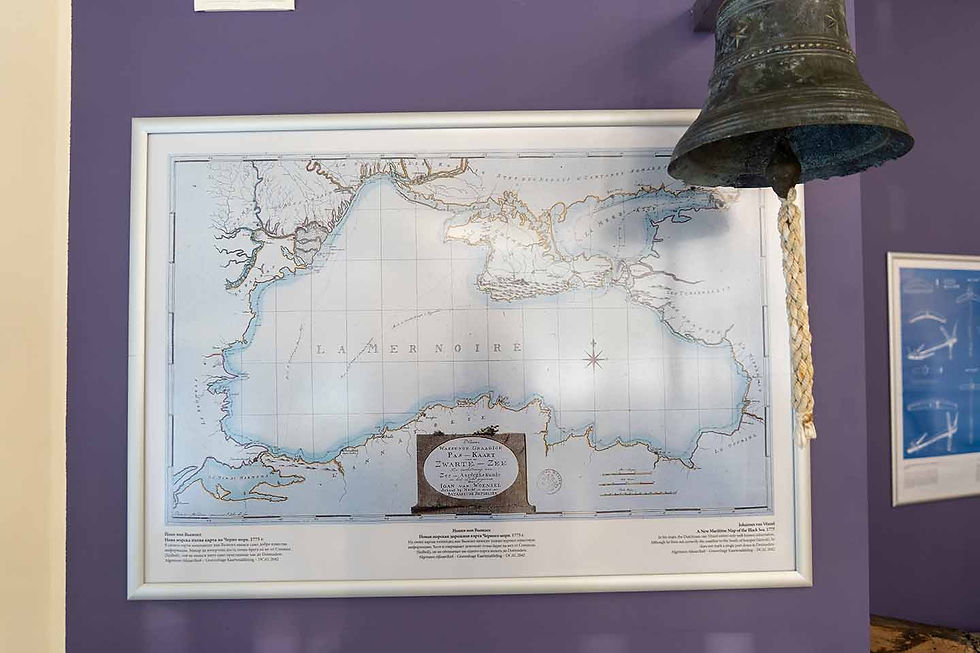
Fishing, for example, remains a primary livelihood for its residents to this day.

The local "Anchor Museum" serves as a key narrator of this millennial seafaring past and the treacherous waters that shaped it.

The public collection "Anchor Museum" in Ahtopol is a unique cultural heritage dedicated to the maritime tradition and fisheries, which have played a crucial role in the economy and history of the region.

It is an important institution for preserving and presenting the deep connection between Ahtopol and the sea, offering insight into navigation, trade and everyday life shaped by the marine environment. The creation of the museum is a proactive effort to counteract the potential loss of historical artifacts, as important and interesting traces of the past are preserved there. The museum represents a living story of community and individual initiative in heritage preservation, serving as a model for other regions facing similar challenges in preserving their past from modern economic realities.

The Anchor Museum Public Collection was officially established in May 2010.
The Creation of the Museum – an Initiative for the Love of the Sea
The birth of the museum is directly related to the initiative of Eng. Petar Kanev, a prominent member of the "Krug Buditel" Association. His personal commitment and foresight were key to laying the foundations of this unique cultural institution.

The museum's collection began with a critical rescue operation. In May 2010, Eng. Kanev made a fateful purchase of two antique lead rods that had been prepared for melting. This act of preservation sparked wider awareness.
After consultations with the Center for Maritime History and Underwater Archaeology in Sozopol, targeted efforts are underway to acquire 19th-century Admiralty anchors, which were also threatened with being sold for scrap.
This initiative quickly gained local support, with residents of Ahtopol and Tsarevo showing patriotism by donating anchors, parts of anchors, and elements from sunken ships that they had retrieved from the sea during fishing and diving activities.
This community engagement is vital. As a result of these dedicated efforts, one of the largest museum exhibits of its kind was created in less than a year, presenting anchors spanning a time period of over three millennia.
The success of this effort, stemming from the act of rescuing artifacts, catalyzed public awareness and subsequent donations from the community, leading to the rapid growth of the collection.
In order to ensure the long-term sustainability and development of the museum, the "Chernomorska Strandzha" Association was established in January 2012 with a public benefit purpose. The main mission of this association is to promote and support the development of the Public Collection "Anchor Museum" in the town of Ahtopol.

This formalized structure provides a framework for ongoing conservation and education activities.
The museum, born from a salvage mission, raises awareness of the vulnerability of underwater cultural heritage and the need for systematic archaeological efforts. It transforms salvaged objects into educational tools that can inspire future generations to engage in marine conservation and archaeology.
The central focus of the museum is its extensive collection of anchors, which allows visitors to trace the evolution of this vital maritime tool over more than three millennia.
The exhibition – a maritime journey through three millennia of history
The collection spans the period from the 2nd millennium BC and includes ancient Greek, Roman and various anchors from Bulgarian history. It should be noted that some of the anchor specimens are considered unique to the Bulgarian Black Sea coast, while others appear unique in the wider maritime archaeology of the Mediterranean.
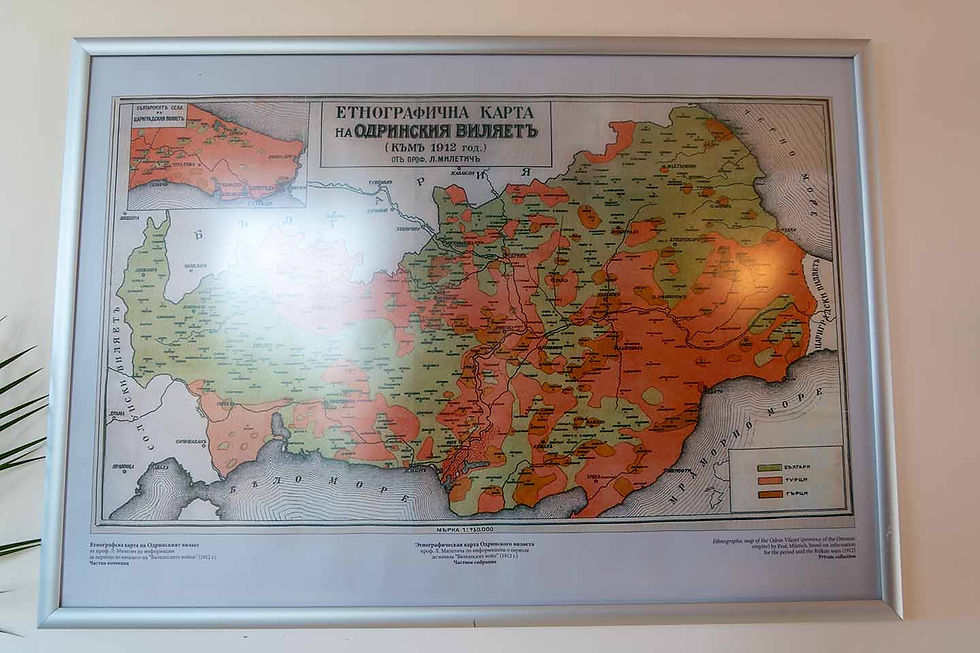
This highlights the international significance of the collection.
Special conservation care is taken for the most valuable and vulnerable iron anchors, and reconstructions have been made with lead rods according to a project by Dr. Atanas Orachev, carried out by engineer Nikolay Klisurski and master carpenter Zhelyo Lazarov from Yambol.

The exhibition extends beyond anchors to include a variety of other maritime artifacts, offering a broader view of the lives of sailors.

These include naval guns, mortars, coins, ceramics and bells, many of which were found among the remains of Turkish, Greek, French, Russian, Byzantine and Roman ships.
This diversity of origins highlights Ahtopol's historical role as a crossroads of maritime trade and conflict.
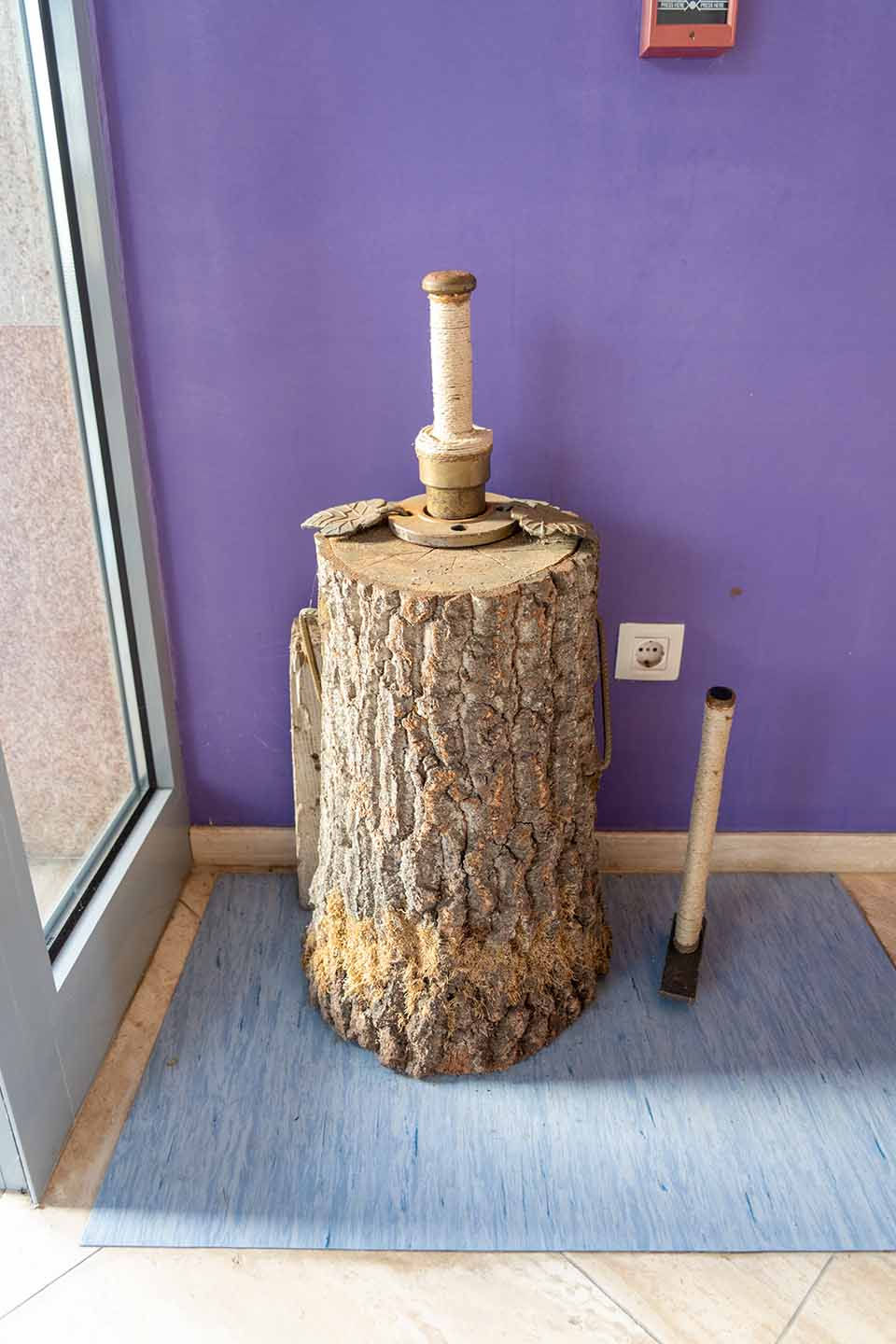
Visitors can also explore various fishing techniques that were historically used in the region, as well as the tools that fishermen used in their daily lives. This section connects the wider maritime history with the local economy and traditions.

A significant portion of the museum is dedicated to the native flora and fauna of the Black Sea, educating visitors about the diverse species of fish and marine organisms that form the core of the local ecosystem and culture. This demonstrates a holistic approach to maritime heritage, encompassing both human activity and the natural environment.
The museum displays numerous old maps of the Black Sea and the Strandzha region, dating from Roman times to European cartography. These maps provide geographical and historical context for the sea routes and development of the region.
The walls of the museum are decorated with numerous old photographs and engravings that capture the history of Ahtopol and its inhabitants. These visual records offer a glimpse into the city's past, its architecture, and the lives of its inhabitants.
The museum also preserves the old harbor lighthouse, a tangible link to Ahtopol's navigational history. The documentary materials in the exhibition illustrate how fishing has changed the society and economy of Ahtopol and the surrounding area.

The variety of artifacts from Turkish, Greek, French, Russian, Byzantine and Roman ships found in the Ahtopol area, along with maps from Roman times, shows that Ahtopol was not just a local port, but a significant point on international sea routes.

The museum's collection goes beyond local history to present a broader narrative of trade, conflict, and cultural exchange in the Black Sea over the millennia. This positions Ahtopol as a key location for studying the interconnectedness of ancient and medieval maritime civilizations.

The inclusion of fishing techniques, tools, and local marine flora and fauna demonstrates a deliberate choice to present a holistic picture of human interaction with the sea, encompassing not only navigation and trade, but also livelihoods, ecology, and cultural practices. This approach enriches visitors’ understanding by demonstrating the multifaceted relationship between the community and its marine environment.

The public collection "Museum of the Anchor" in Ahtopol has been consistently described as a unique cultural heritage.
Uniqueness and significance of the museum
Its collection is recognized as one of the largest museum exhibitions of anchors, tracing their history for more than three millennia. The presence of anchor specimens that are unique to the Bulgarian Black Sea coast and potentially to the wider maritime archaeology of the Mediterranean, enhances its scientific and historical significance beyond the regional scope.

The museum plays a crucial role in the preservation of underwater cultural heritage.

The museum has the potential to attract not only tourists but also researchers and specialists, encouraging academic collaboration and contributing to a broader understanding of the world's maritime history. Its unique finds could lead to new interpretations of ancient trade routes and shipbuilding.

The museum is designed to offer visitors not only information but also practical knowledge about the marine environment through interactive displays and educational materials. It frequently organizes educational initiatives and workshops for both children and adults, aiming to deepen their understanding of maritime history and fishing. These programs include lectures, demonstrations of traditional fishing techniques and activities related to the protection of the marine environment. This active engagement fosters a deeper connection between the community and its heritage.

The public collection "Anchor Museum" in Ahtopol stands as a profound testament to the city's enduring connection with the sea. It is much more than a collection of artifacts - it is a living narrative of Ahtopol's millennia-long seafaring past, from its ancient Greek and Roman roots to its continuing role as a vital port and fishing center.
The museum’s unique focus on anchors, combined with its diverse collection of maritime relics, maps and historical photographs, offers every visitor an unparalleled journey through the region’s rich maritime history. Its significance is enhanced by the presence of specimens rare even in Mediterranean maritime archaeology.
Born from the passionate initiative of Eng. Petar Kanev and the patriotic contribution of local residents, the museum illustrates the power of community commitment in the preservation of cultural heritage. The ongoing support of the Black Sea Strandzha Association further strengthens its role as a beacon of conservation and education.
With its free admission, free talks, and open photography policy, the museum is extremely accessible and visitor-oriented, actively promoting public interest and appreciation for maritime history.
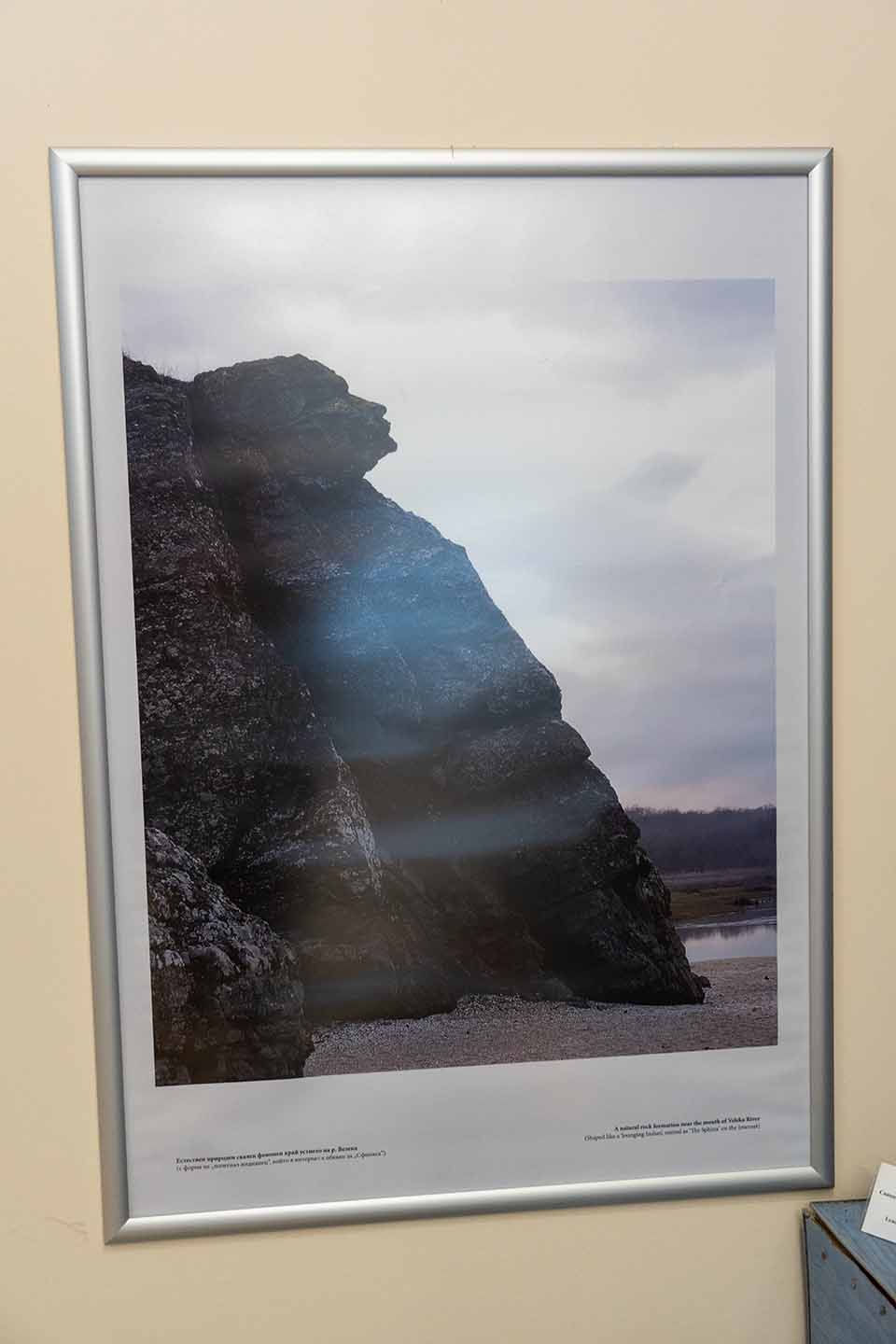
Its location in the beautiful Strandzha Nature Park further enriches the visitor experience, combining cultural exploration with natural beauty. Through its educational programs and holistic approach to maritime history – encompassing not only navigation, but also fishing traditions and marine ecology – the museum fosters a deeper understanding and respect for the sea and its profound influence on human civilization.

The museum is a central part of Ahtopol’s identity. It acts as a focal point for understanding the historical trajectory of the city and its relationship with the sea, which has defined it for centuries. In an era of globalization and changing identities, the museum serves as a powerful symbol of local identity and continuity, reinforcing Ahtopol’s unique place on the Black Sea coast. By combining historical preservation with educational initiatives and offering free access, the museum contributes to a model of cultural development that prioritizes public benefit and long-term commitment over immediate commercial profit. Efforts related to the protection of the marine environment further link cultural heritage with environmental sustainability. This shows that the museum is not just a look back, but also building a sustainable future for Ahtopol, where cultural heritage and environmental awareness are intertwined.
Ultimately, the Public Collection "Anchor Museum" in Ahtopol is a living monument to the resilience, ingenuity and deep-rooted maritime spirit of its people. It serves as a key cultural asset not only for Ahtopol and Bulgaria, but also for the broader understanding of Black Sea history and the world's maritime heritage.

The public collection "Anchor Museum" in Ahtopol invites every visitor to cast anchor in the past and discover the fascinating stories stored within its walls.
How to get to Ahtopol?
Ahtopol (Greek: Αγαθούπολιο) is a town on the southern Black Sea coast of Bulgaria, in the Tsarevo Municipality, Burgas District.
Uncover the thousand-year history of the seaside town and visit its hidden treasures HERE.
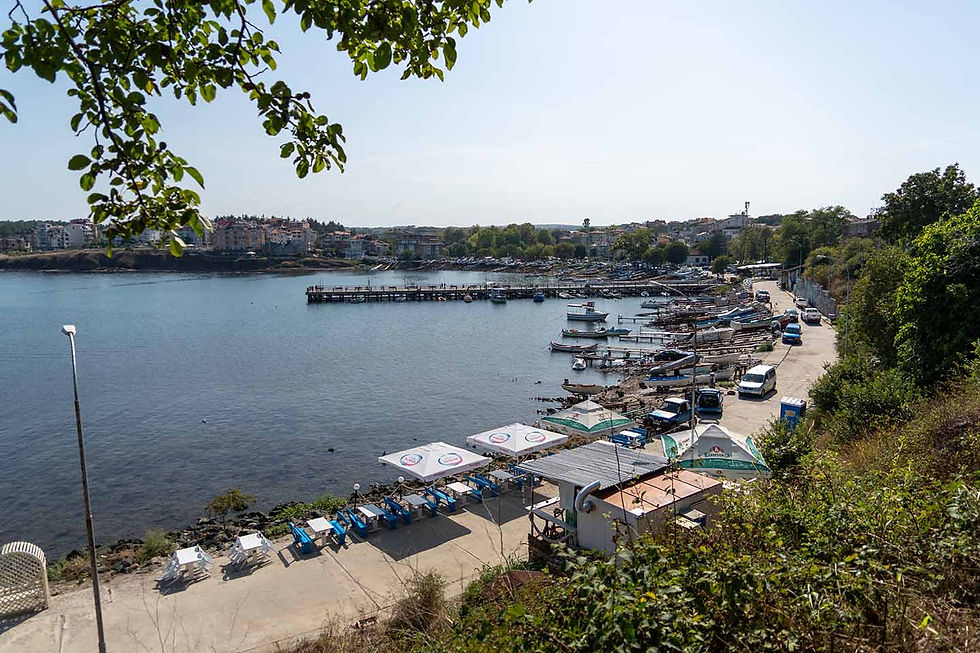
The third-class republican road III-9901 passes through Ahtopol, which leads northwest through the village of Varvara to a connection near the town of Tsarevo with the second-class republican road II-99 and along it to Burgas, and southeast through the village of Sinemorets it leads to the village of Rezovo, where it ends.

There is no air transport in Ahtopol. The nearest airport is Burgas Airport.
Ahtopol is located:
460 kilometers (about 4 hours and 44 minutes by car) from the capital
328 kilometers (about 3 hours and 34 minutes by car) from the city of Plovdiv
207 kilometers (about 3 hours and 17 minutes by car) from the city of Varna
77 kilometers (about 1 hour and 09 minutes by car) from the city of Burgas
Ahtopol is located about 15 kilometers (about 18 minutes by car) southeast of the municipal center of Tsarevo and about 17 kilometers (about 21 minutes by car) north-northwest of the southernmost Bulgarian settlement on the Black Sea - the village of Rezovo, near which the state border with the Republic of Turkey passes.
The city is located on an abrasion terrace on a rocky peninsula between Cape Ahtopol and Cape Sveti Yani.
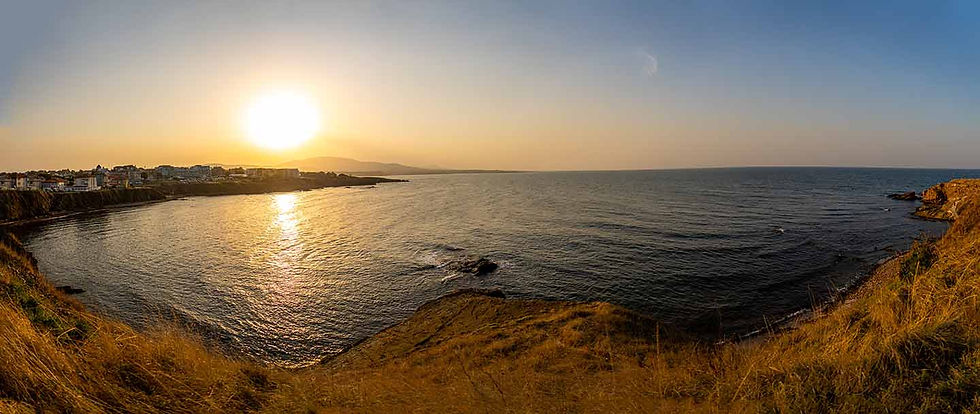
To the west, right next to the city, the branches of the Strandzha hill Bosna reach, with the highest peak Papija (501.4 meters).
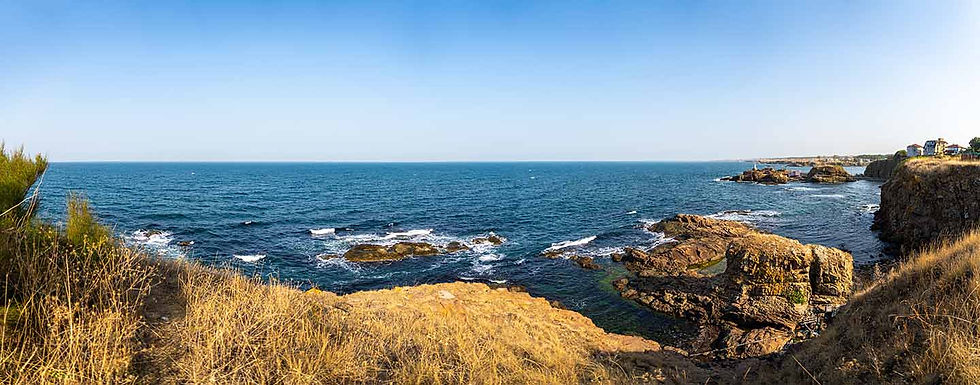
About four kilometers to the south, near the village of Sinemorets, is the mouth of the Veleka River.

The altitude in the city at the "Holy Assumption of the Virgin Mary" church, which rises directly opposite the port, is about 10 meters, in the southwest it increases to about 30 - 35 meters.

I tell you about the Church of the Assumption of the Virgin Mary in Ahtopol HERE.
The climate is continental-Mediterranean with a strong Black Sea climatic influence - mild winters - the mildest winter in Bulgaria, hot summers, early spring and a long and warm autumn.

Ahtopol has a humid subtropical climate (Köppen climate classification) bordering on a Mediterranean climate with limited continental effect.
Ahtopol is a seaside resort with hotels, holiday villages and bungalows, located mainly in the Korosiata area, west of the city, restaurants, numerous guest houses, entertainment venues and campsites.
The beach near the Korosiata area, called the Central Beach of Ahtopol, is with fine sand and dunes, wide, with a length in the territory of Ahtopol of about 1400 meters, and together with the beach, continuing to the northwest in the territory of the village of Varvara - a total of about two kilometers. The coastal seabed is shallow.
In addition to the central beach, there are a series of small beaches in the territory of Ahtopol.
The city is within the territorial scope of Strandzha Nature Park.

In the northern part of the port of Ahtopol stands the Ahtopol Lighthouse - the white guard of the port.
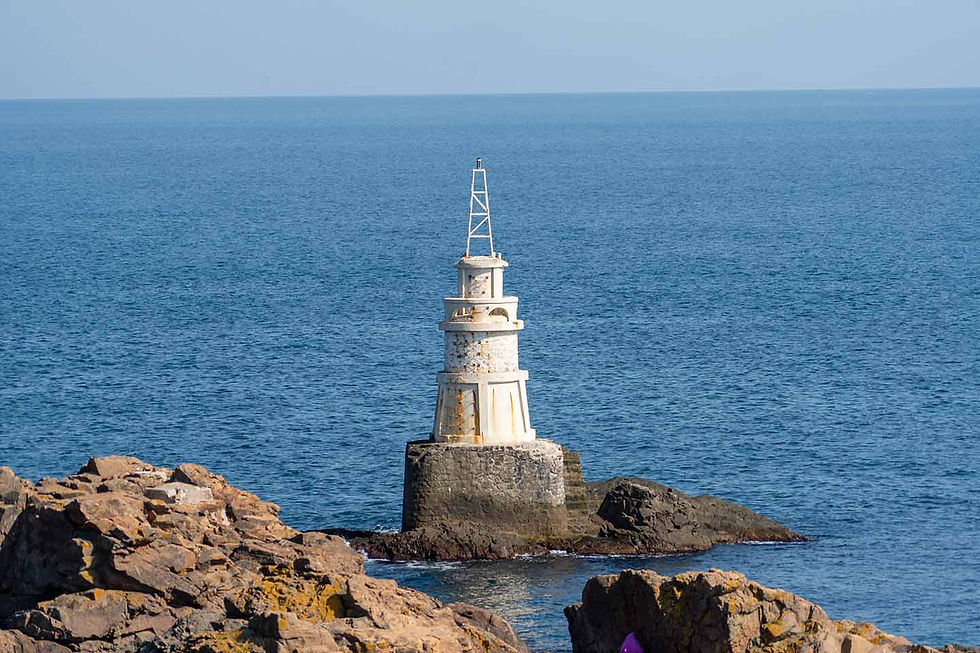
I tell you about the Ahtopol Lighthouse – the white guard of the port HERE.
On the site of today's city of Ahtopol, settlements have existed since the Neolithic Age, and during the Iron Age the region was inhabited by the Thracian tribe of Tini.
As a city, Ahtopol was founded around 430 BC by Greek colonists from Athens, and it is assumed that its founding is related to the actions of Pericles in the Black Sea regions.
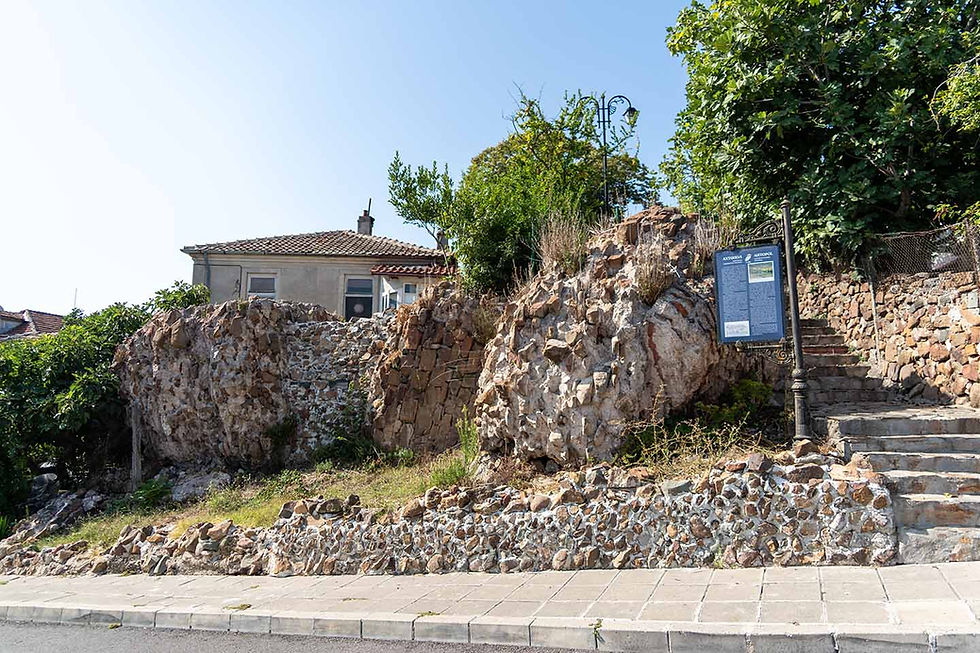
The city became a trading center, with coins being minted there.
After the barbarian invasions of the 5th - 7th centuries, the city was rebuilt by the Byzantine commander Agathon, who called it Agathopol.
During the Middle Ages, Agatopolis was included in the territory of Bulgaria several times.
I tell you about the late antique and medieval fortress in Ahtopol – the city of love and happiness Agatopolis HERE.

You can see the fully preserved church "Holy Ascension of the Lord", built in 1776, remains of the monastery "St. John" (St. Yani) from the 12th century, as well as parts of the defensive fortress wall that surrounded the city's citadel, built by Thracians, Romans and Bulgarians, ruins of which can now be seen throughout Ahtopol.
I tell you about the temple monument "Holy Ascension of the Lord" - one of the oldest and most significant architectural monuments in Ahtopol HERE.
The rich historical past of the region is told by the priceless exhibits displayed in the building of the old Greek school, which has today been converted into a museum, as well as the extremely interesting museum collection of the Public Collection "Anchor Museum" in Ahtopol - an immersion in the thousand-year-old maritime tradition with a great love for the sea.
I tell you about the Old Greek School in Ahtopol - a creative base of the National Academy of Arts, a remarkable example of a cultural and historical monument and a center for art and heritage HERE.
How to get to the Public Collection "Anchor Museum"?
The public collection "Anchor Museum" is located south of the city's port at 3 Neptune Street, on the shore of Ahtopol Bay.

The museum is located in the building of the "Museum" restaurant, with the second floor entirely dedicated to museum exhibitions.

Admission is free for all guests!
You can leave your cars in the parking lot in front of the museum.

The exhibition's working hours are every day from 6:00 PM to 9:00 PM.
The talks are also completely free!
On the territory of the museum, photos of the exhibits are explicitly allowed, which improves the visitor experience and encourages the sharing and dissemination of information.
You are reading an ad-free blog - completely focused on the content!
I remind you that you can read all my posts here - in "Photo Moments", without being interrupted by a single annoying ad, because "Photo Moments" is a place without ads!
I made the important decision to make "Photo Moments" ad-free so that my site can load much faster, the content I present to you can be as clean as possible, and your experience in "Photo Moments" can be the best possible!
If you appreciate everything I do, you can support me HERE or by following the gold star below.
Thank you!
And finally, my dear friends,
you shouldn't miss checking out
the special photo album with moments –
discovered, experienced, filmed and shared with you!


















































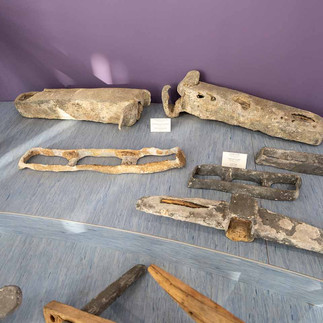

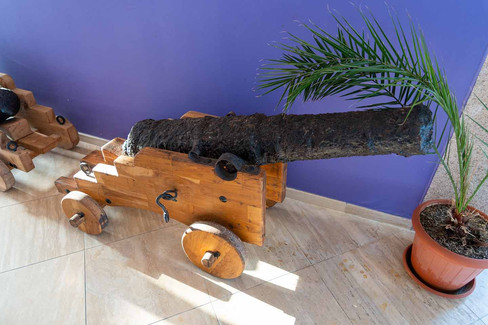


































































































Comments